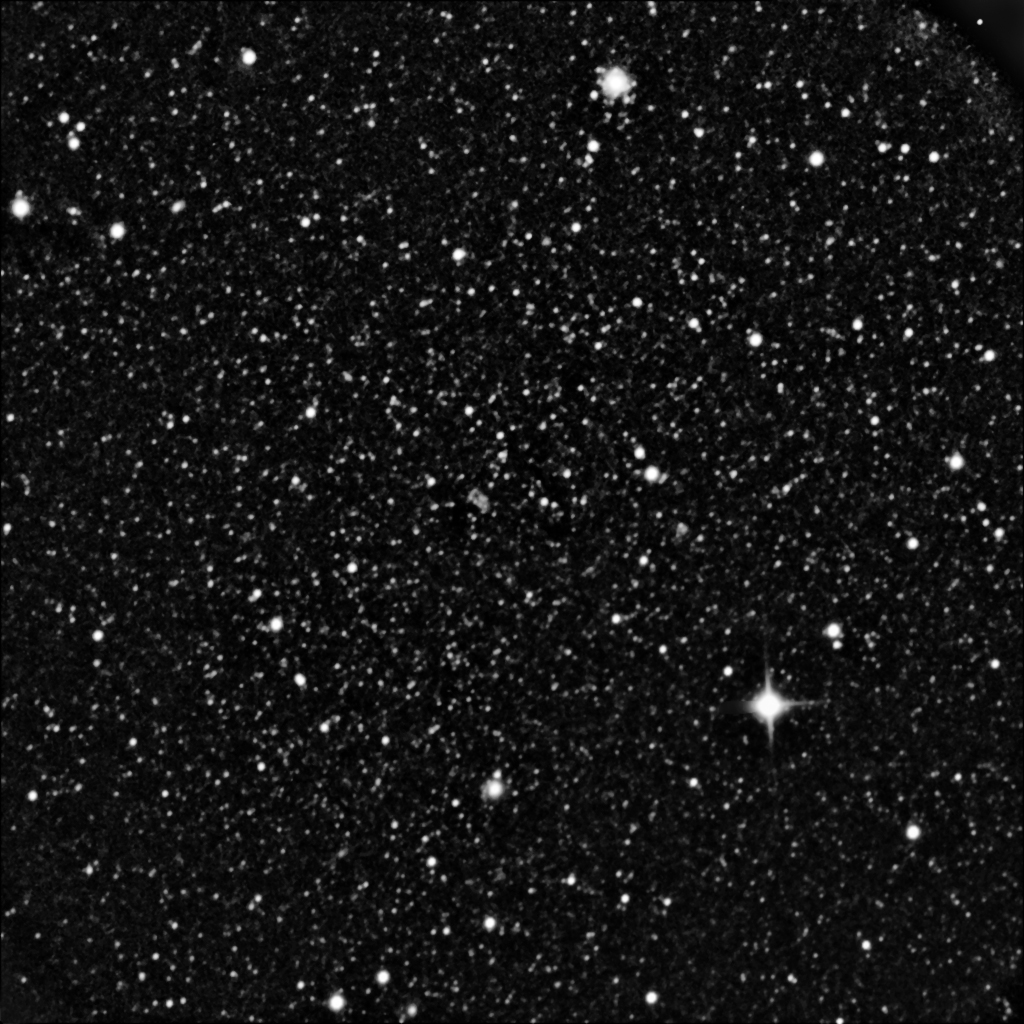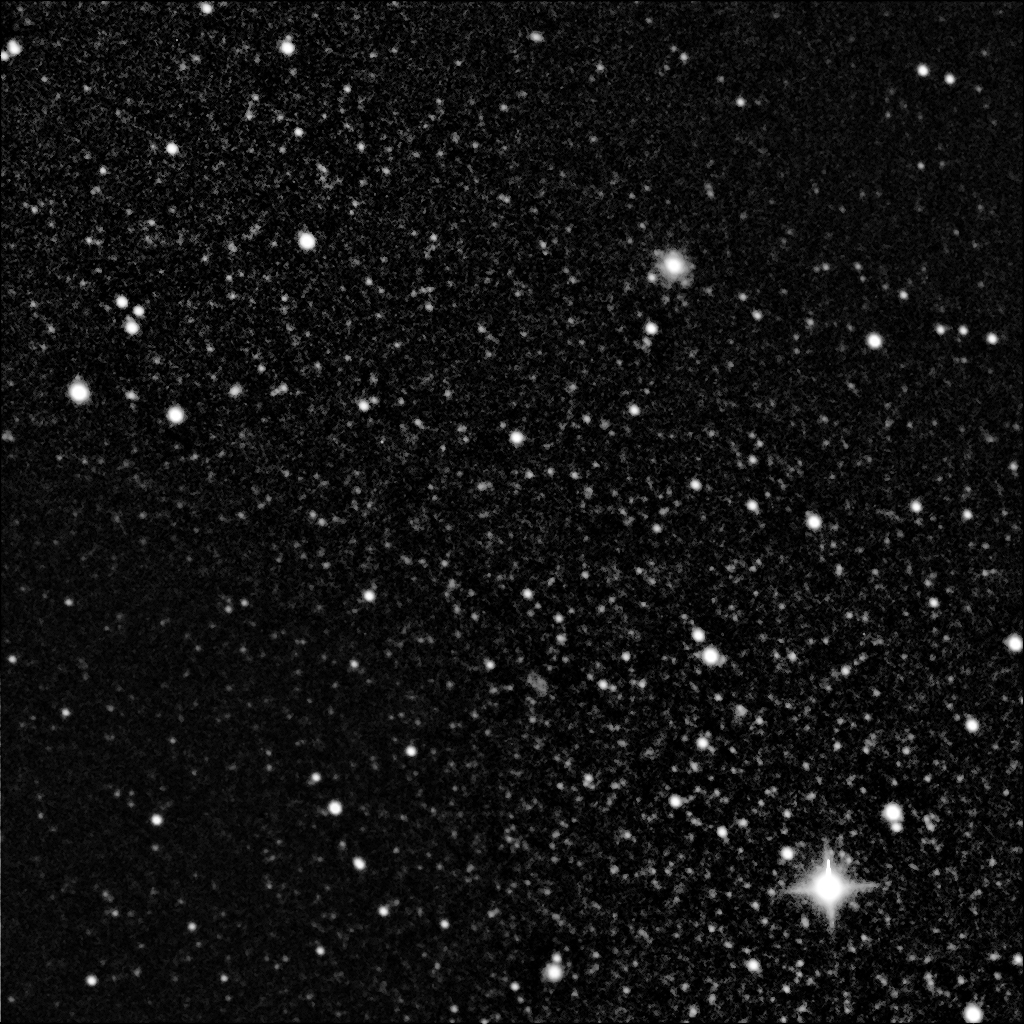
Combination of 10, 3 minute exposures unfiltered.
SBIG STL-1001E CCD. 20" f/6.8 Dall-Kirkham cassegrain telescope at prime focus.

The Fornax Dwarf galaxy is a relatively close member of the Local Group, and is an excelent example of a dwarf ellipitical galaxy, which are believed to be the most common type of galaxy in the universe. It is located in a rather barren part of the sky, about 6 degrees north and 2 degrees west of the star Acamar.
Although rated at magnitude 8.3, the galaxy is extremely difficult to observe due to its very low surface brightness. In the image above, the galaxy covers the entire field, yet it appears just as a jumbled mass of stars. With a 17.5" telescope and very dark skies I have only ever managed to detect the slightest hint of its presence. The problem is that the individual stars of the galaxy are very faint and very well scattered. This faintness makes dwarf ellipitical galaxies very difficult to detect outside of the Local Group. Therefore although they are the most common type of galaxy in the Local Group, they are almost unknown elsewhere.
The Fornax Dwarf is home to about a dozen globular clusters, and 2 of these are easy objects for an 8" telescope. A unique situation where the globular clusters are much easier to observe than the parent galaxy! One of these globulars is visible near the top of the image. This is the is the 12.6 magnitude NGC 1049. A second globular cluster, looking almost like a star, is visible towards the bottom of the image. This is the 13.6 magnitude Fornax 4. Observing these clusters is the best way of pinpointing the location of the galaxy.
